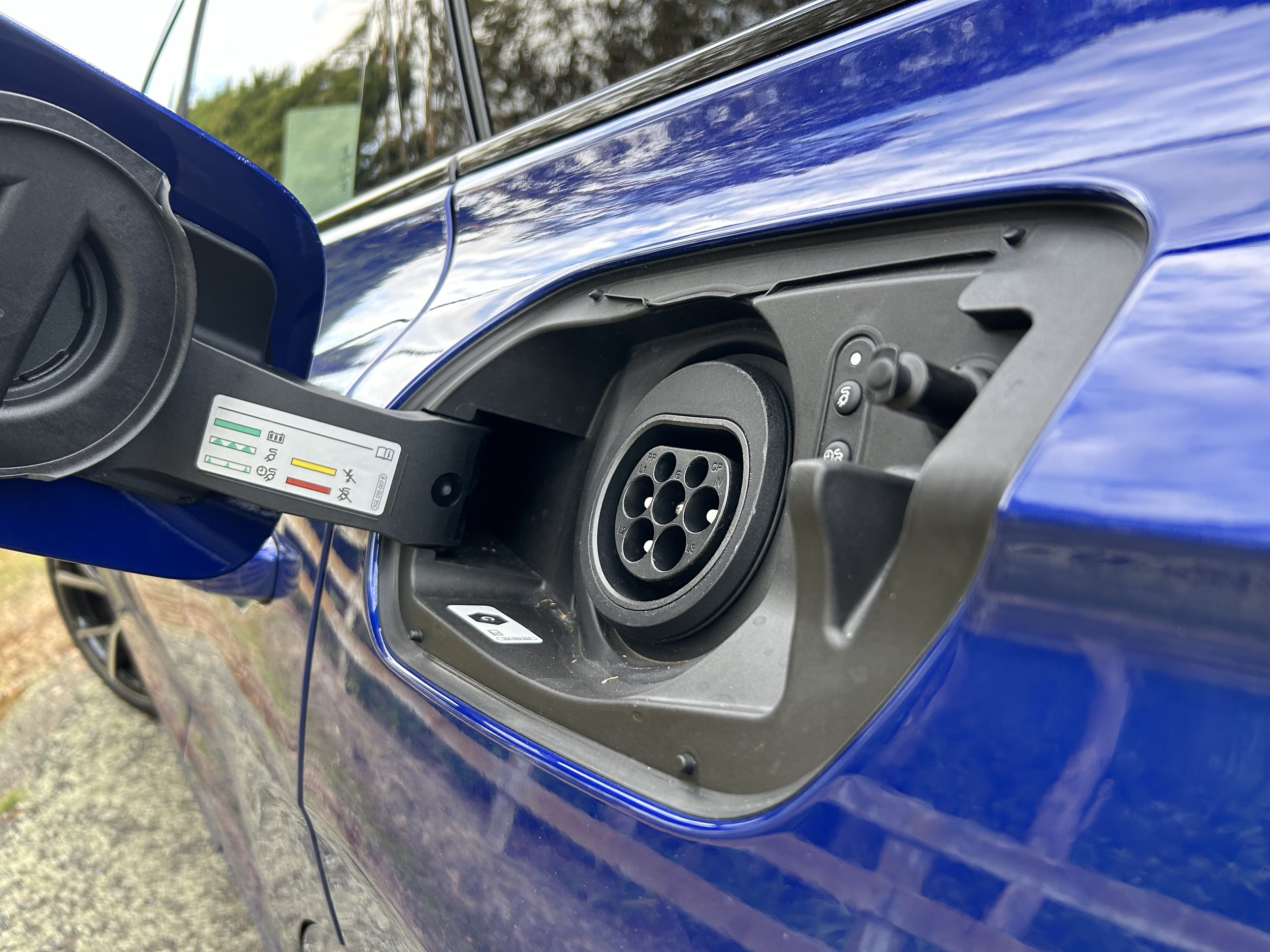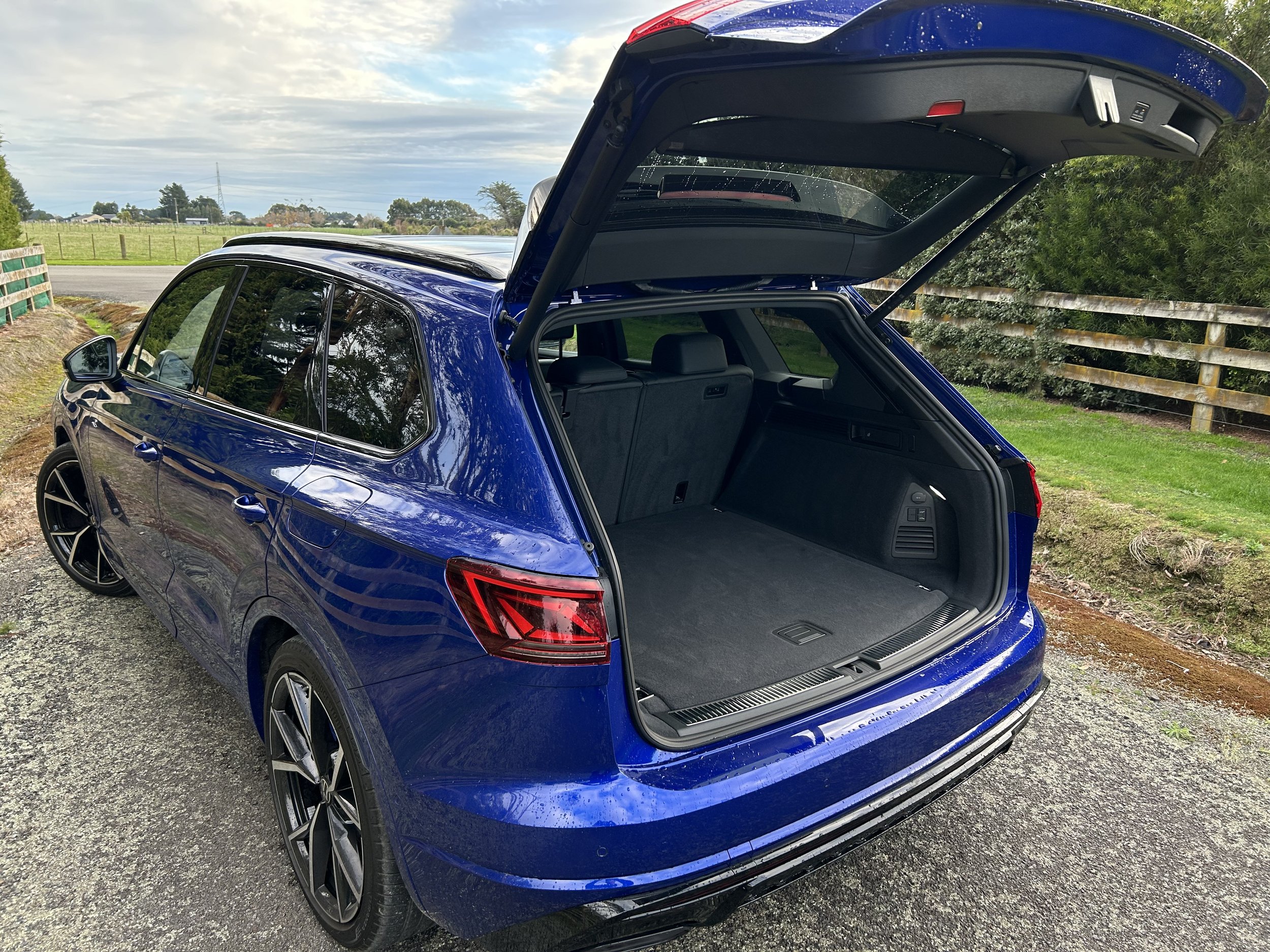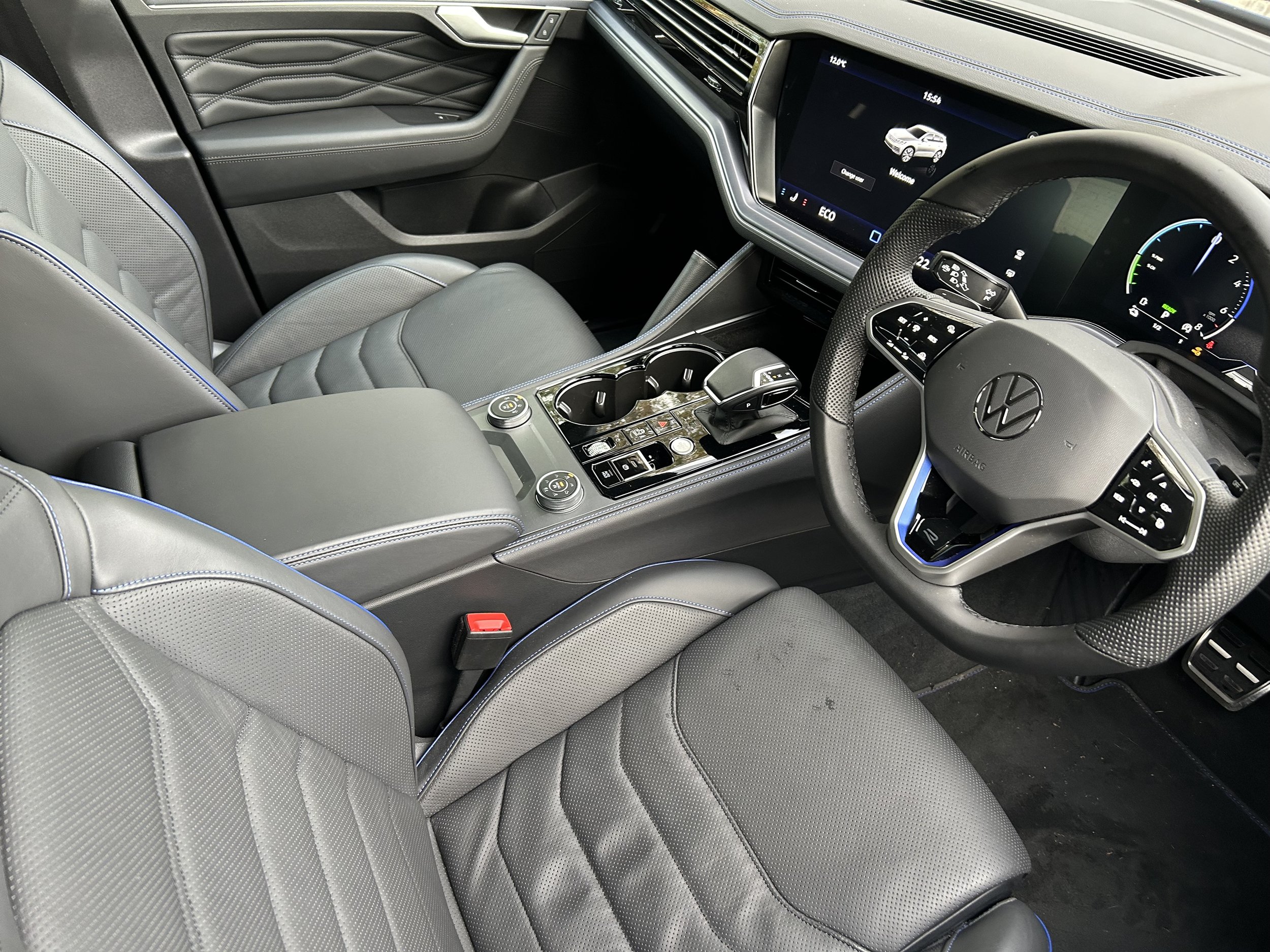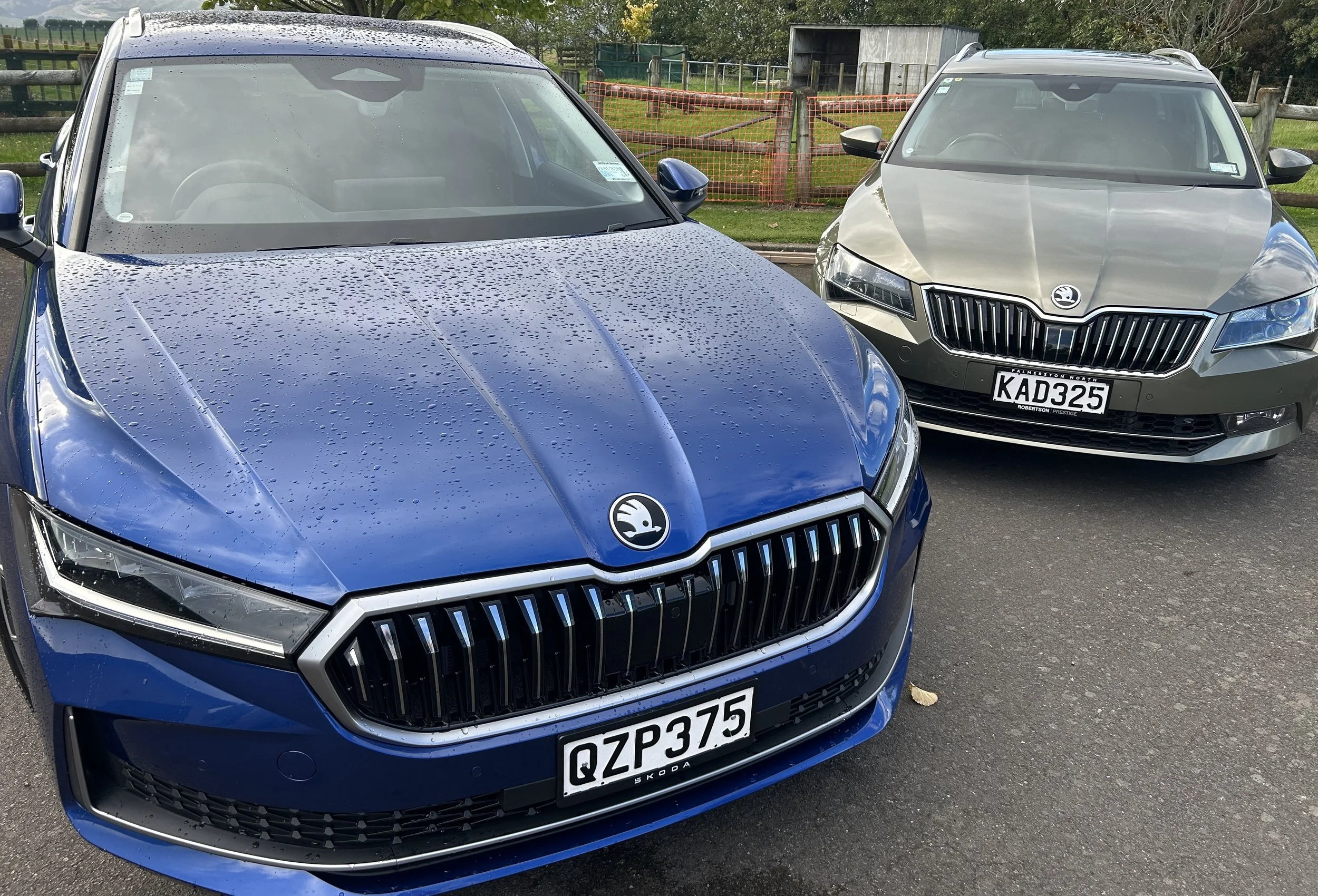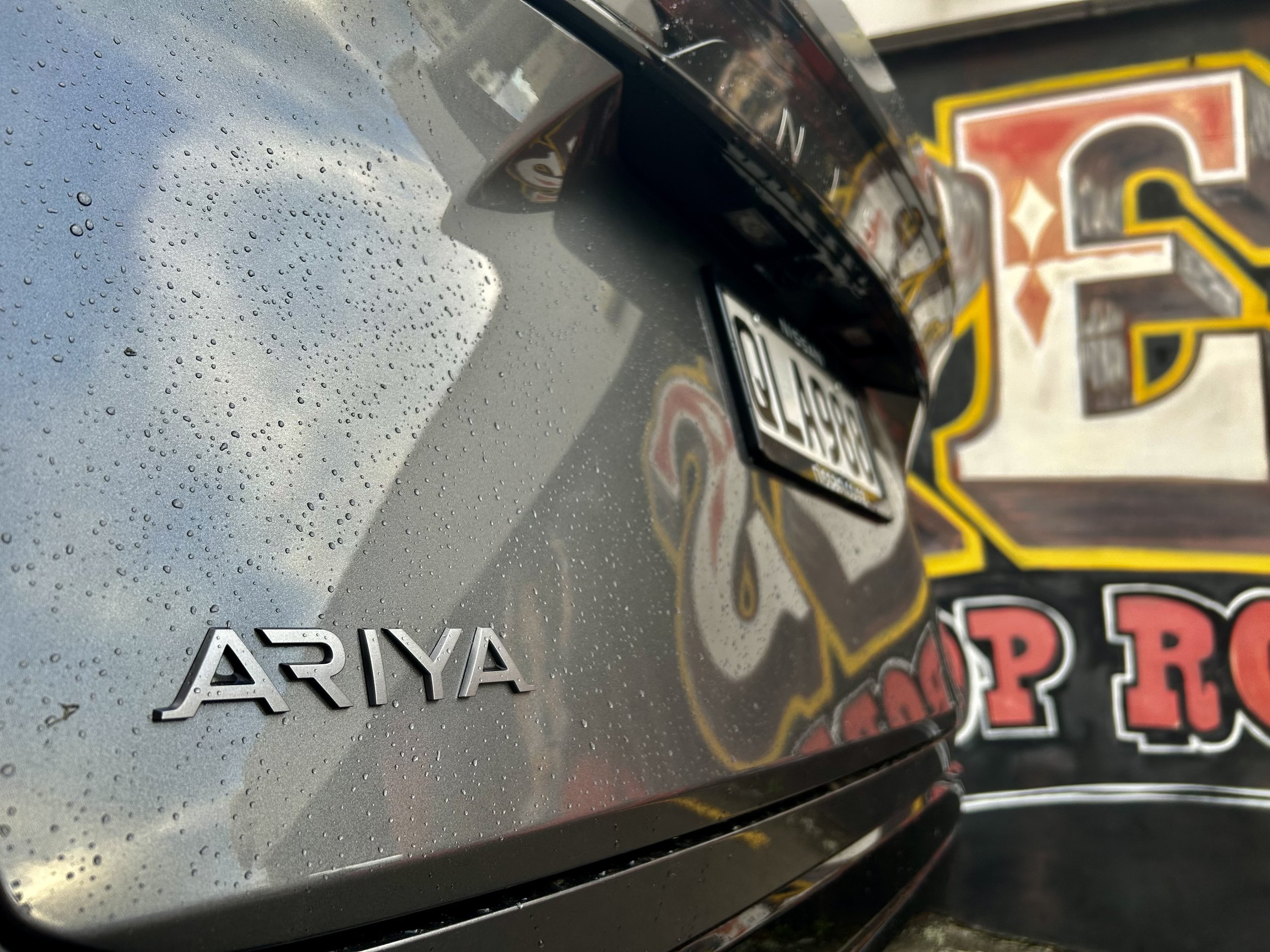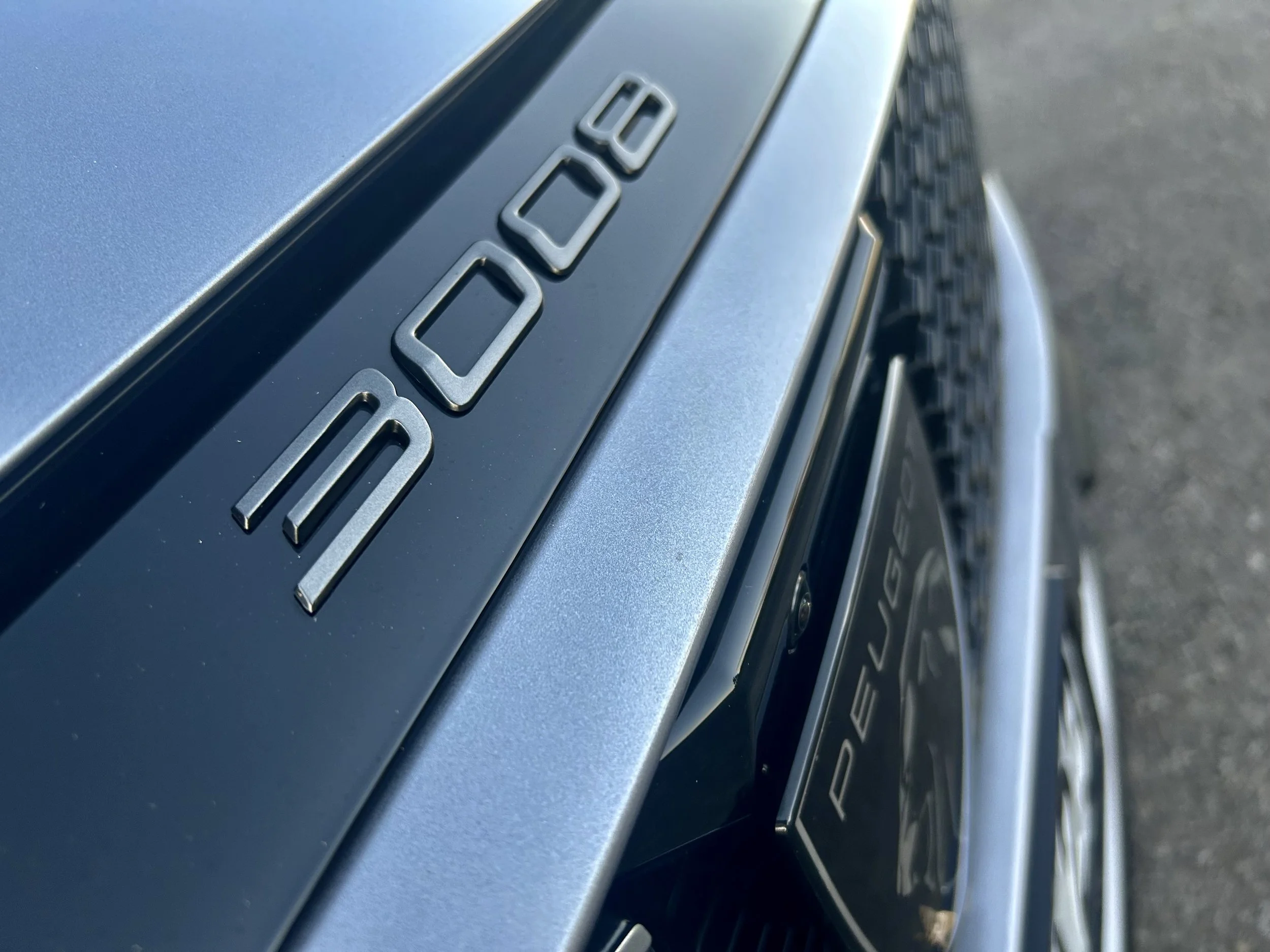VW Touareg R PHEV road test review: Whopping Wolfsburg wallop
/This big SUV has always been diesel-wed. So how persuasive is this impressively pumped electric-amped petrol powerhouse proposal?
Price: $159,990.
Powertrain: 2995cc petrol V6 with electric motor assist, 340kW/700Nm combined output, eight-speed auto, 4Motion all-wheel-drive.
Dimensions: 4902mm long; 1984mm wide; 1712mm high.
We like: Has a proper premium feel; no doubting performance claims.
Not so much: Small battery; diesel better suits its character.
SISTER models, all using a common platform and technology, all built in the same factory; so alike, so different in character.
The Porsche is the sportiest, the Audi the most suave, with the added attraction of seven seats. The Volkswagen? It’s always been touted as the one serving everyman appeal with an eye to cost consciousness.
In reality, the relationship between the VW Touareg, Audi Q7 and Porsche Cayenne is more complicated and altogether closer. Think circles that more than occasionally converge.
Touareg is a more complex character than is often presented. The idea that it is last to get best kit is wrong. Not only are air suspension, trick driving aids for on seal and off and four-wheel-steer delivered to all three, but the VW, while the most diesel-committed, has had some spectacular engines: Most latterly a V8, but also in the past a V10 and (though just for Europe, and only briefly) a W12.
And now? Three editions, everything being in V6, seems a sign of downsizing times, but in reality the 3.0-litre in the new flagship is quite altogether different to the mill delivered to cheaper choices.
Open one fuel flap and you’ll see a sticker asking for premium grade … petrol. That’s a Touareg first. Open the other on the bodywork … and a portal to another kind of fuel. Electrons.
Sited around the buff bodywork, on the seats and in other places, R badges. Another first. Nothing so large has previously been allowed into the performance clique, but with 0-100kmh in 5.1 seconds now, the big fella has bullied entry. That time, after all, is just 0.4 seconds behind what the Golf R can manage. Top speed of 250kmh matches the hot hatch.
Getting that pace asks for enormous outputs. On the power side, it’s unsurpassed, not just the highest kiloWatt count meted a Touareg, but also the most powerful VW selling here. None of the three big banger diesels that served this car delivered quite that, though the V10 diesel came within 9kW.
Torque-wise, it’s the biggest twister of the existing family, by strength of up to 200Nm, but less muscular than past family heroes. Data shows the W12 had 50Nm short of the eHybrid. But the V10 and V8 still stand as the type's big Earth movers; the second quite significantly, with 900Nm. They don’t do diesels like that any more.
So give and take. But the key appeal VW proposes is that this new engine is giving in the ‘right’ way, in disparate saint and sinner directions.
Give it a hoof and it’s a rocket; to point that when the electric energy is optimal, it’ll chirp the fat 285/35 R22 rubber on launch and the mid-range oomph is stupendous enough to make overtaking obscenely easy. That’s one draw, obviously.
The other comes should you chose to tread lightly. Then it has potential to be fully Green. VW testing has brought a 1.9 litres per 100km. No, not a typo. That’s thriftier than the most parsimonious small car here, the Toyota Yaris Hybrid. And in doing so, it’s also emitting 44 grams per kilometre into the environment, according to WLTP measurement.
Can a high-performance SUV also truly hope to be anything that ecologically sound? I’ll save any suspense. No. Not from this test. But there’s a good reason.
Back to the performance side. You can immediately understand why VW’s performance people put so much effort into suspension tuning, tyre choice and brake upgrade. This thing demands that level of attention.
You’ll muse if it is as full out fiery and as fleet and sure-footed as the closely like-engined, same platform Porsche product that also comes from the Bratislava plant in Slovakia. Probably not. Yet it likely runs the Cayenne hybrid close enough to leave impression that only badge propriety restrained VW’s effort. That, and pricing difference. Inasmuch as this is the most expensive Touareg yet, it’s still siting well below the admission to club Cayenne.
Still, it’s evident that VW isn’t selling anyone short with this exercise. With this model, there’s more deftness and driving flair than a regular Touareg has. The additional element of four-wheel steering adds further capability and sporting potential. But only to a point. For me, that’s a good thing.
The Porsche is the best-handling off-roader you can buy - but it's never soothing. Touareg, on the other hand, has consistently sold on strength of being more amiable In that respect, it’s quite positive in my view that for all its warpaint and additional wallop, the R maintains a softer side to its actions.
Agreed, for this you must keep the tuned air suspension out of the firmest setting, but why would’t you? The ride is nicer one click down and the anti-roll systems still do their thing, so it still corners just with assurance and on a relatively even keel, but with fairly decent ride and refinement. Given it takes 22-inch rims, the biggest yet meted the type, that’s a win.
So, any way, to the other matter. Is it as easy to find the thrift as it is the thrust?
Realistically, it’s hard to imagine anything in the sub four litres per 100km zone coming up as an average on the trip computer. As ‘real-world’ as the WLTP test strives to be … it’s not.
That’s not to say I wouldn’t have been keen to try. But in this car, I couldn’t.
To explain. The 17.9kWh battery pack used by VW to deliver 14.1kWh usable capacity to the 100kW electric motor is a smallish item for a large car. As a for instance, consider the physically smaller, lighter (yet seven seat) Mitsubishi Outlander PHEV now gets by with a 20kWh unit.
Keeping the VW within the electric-petrol happy zone logically demands daily replenishment. Just two hours with a wallbox, which I don’t have, expanding to eight hours from household mains supply. I was resigned to the latter.
But, for this, you need something the car should have had, but didn’t, a charging kit. Somewhere along the way, a previous user had taken it and the luggage bay cover. I only discovered this after the battery had depleted. VW NZ couldn’t get a new cable to me in time and the local dealer didn’t have one to spare. I was welcome to replenish the car at the dealership. If I could get there. I couldn’t easily. The sole access road out of our housing area was being rebuilt during time of test and thus pretty much closed during the period the outlet was open.
Fair dues, the drive battery stayed on duty for two and days driving. And, even after it was supposedly fully depleted, I suspected it was not entirely exhausted.
Without complete electric zest, the powertrain still ran smoothly and never strained, continuing an impeccable interaction with the eight-speed auto. But it ceased feeling as powerful as its on-paper stats suggested it should. It was also patently drinking more. As of course it would. This model feels very heavy due to the hybrid components. Was an average of 10.2 litres per 100km a good outcome? The ongoing diesel is good for 7.9.
By end of play, I’d reconciled that the R isn’t really as it proposes, any way. There’s sporting pedigree, yes, but like any other high performance SUV, it’s unavoidably comprised by the realities of size and substance. I’ve been on track at high speed in a Cayenne; it’s capable, but not fun. Nut it’s never going to beat a 911. Likewise, the Touareg won’t frighten a R-rated Golf.
Reality says it is more in the mode of being a fast, luxurious SUV. Which is okay, isn’t it, not least given that it has an undeniably affluent look and ambience. In respect to that, my neighbour has diesel R-Line that I’d always considered very plush. It was far from bargain basement in company of the R eHybrid, but even so, the newer car has clearly been treated to more enhancement still.
As much as it’s claimed VW is a rung lower than Audi and Porsche on the prestige ladder, it’s hard to see evidence of that here.The quality of the fixtures and fittings is superb and, with the Touareg already offering a nicely commodious and comfortable environment to start with, it’s an easy car to settle into for a decent drive.
Like every updated Touareg, the R eHybrid receives the discreetly massaged exterior looks, centred around a new grille/headlight arrangement and full-width strips of illumination at both ends of the car - including a light-up VW boot badge.
R club admission means it takes additional bespoke hammer-time detailing of gloss black highlights and brake callipers in blue and with the 'R' emblem. Dark-red rear light clusters also lend to the sportier exterior appearance, and it can exclusively furnish as seen here, in Lapiz Blue; a shade commonly seen on the Golf R.
Inside, the big eye-catcher of all 2024 offers is that Innovision Cockpit of conjoined digital screens that comes with software and functionality upgrades to bring more advanced HD map data with lane-level sat-nav and a new voice-control system based around conversational commands. There's also wireless mirroring of smartphones via Apple CarPlay and Android Auto.
Other changes centre around the switchgear within the centre console and the USB-C ports, which have been upgraded from a charging capacity of 15W to 45W for faster recharging of electronic devices.
The driving assistance systems have been improved, and there’s a remote parking function via an app. A roof load sensor helps the ESC understand the loads it’s dealing with.
For R level there’s additional premium with Puglia leather trim with contrast blue stitching and piping, as well as brushed dark aluminium dash inserts, quilted leather on the door cards, full 'ergoComfort' active climate-controlled sports seats with 14-way adjustment, brushed stainless steel pedals and 'R' logos sited in all the most eye-catching places.
Another additional element to gloat about is extra padding to protect the front-seat occupants' knees when hard cornering.
VW’s migration toward almost buttonless cabin environments has raised criticism, and in Touareg there’s also more need to run much functionality via a centre screen that, at 15-inches, is the biggest they put into a car. The prod and swipe requirements ask for some learning, but you find a way. The touch-sensitive controls on the steering wheel are a different matter.
Arguably the very best tech shows up after dark. A new ambient lighting effect is fun but more astounding are the ‘HD Matrix’ headlights made up of thousands of micro LEDs. These are able to create what VW calls an ‘interactive light carpet’ to take the stress and strain out of driving at night. The illumination is impressive in its reach and constantly changing pattern yet doesn’t seem to annoy oncoming traffic.
While the Touareg resolutely remains a five seater, and likely misses a trick in doing so, it does offer spacious passenger accommodation. This model has historically been well off for boot space by category standards, but like so many PHEVs the R has to sacrifice boot space, in the main to accommodate the battery pack. Cargo capacity goes from 665 rear seats-up litres to 1675 litres seats down, whereas the diesel types deliver 810-1800.
Giving the Touareg a look that brings it into line with the rest of the VW SUV range is fitting, if also a reminder that in the 22 years since this nameplate came out the off-road wagon family has grown considerably, with a whole retinue of juniors, not least the Tiguan, which is probably going to seem a more sensible choice for many.
This iteration is an interesting development; while it is wider, longer and slightly lower than previous iterations, with a more athletic look, it also represents as a comprehensive redevelopment of a familiar design rather than a reshaping.
We all know progression into PHEV format is the prelude to something bigger. Given where VW is heading in respect to electrification, it’s hard to imagine this third generation plugging on in combustion-engined form for as long as the previous two generations did. Whether it will transform into a full battery car? Yet to be announced.
Conceivably, it stepping forward into the battery era is a good idea, not least when it keeps true to an elemental attraction. Whereas some PHEVs demand going lite on hauling a load, this one doesn’t - it has the same up-to-scratch towing capacity of 3500kg as the diesels.
So what’s to stop you? Just that it’s impossible to shake the idea that the Touareg is just one of those models for which a turbodiesel still seems a more natural fit as a whole.
VW NZ knows this full well, which is why they have kept in reserve an R-Line that keeps burning what many long-time fans might still consider the good oil.
It’s not as affluent in its presentation, sure, isn’t quite as muscular (but only down 100Nm), could be just as handy off-seal, will have better overall range … for a touch more Road User Charge pain. That’s easily swallowed up by the $18,000 saving.



